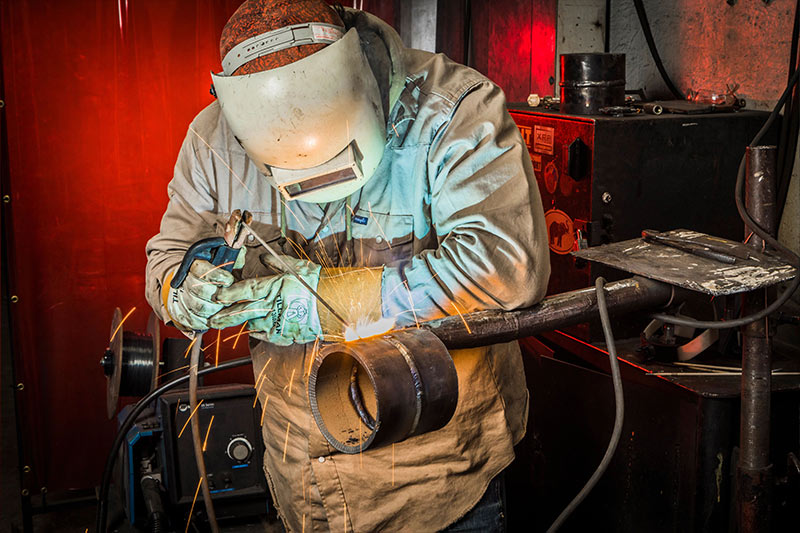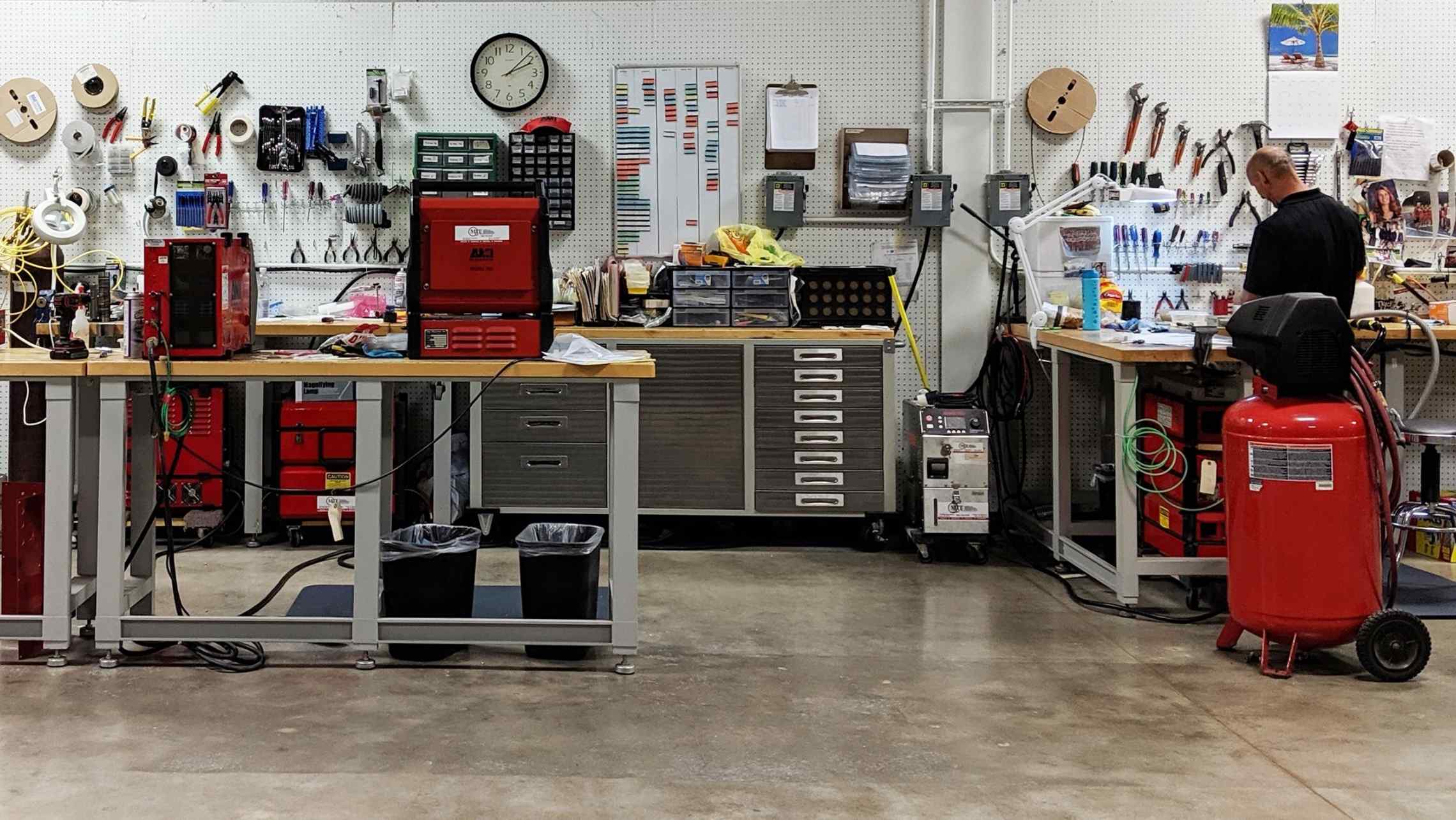Typical Welding Repair Work Issues and Just How to Address Them Effectively
Welding repairs usually come across an array of issues that can endanger the integrity of the last product. Typical problems consist of insufficient infiltration, porosity, and misalignment, to name a few. Each problem presents unique difficulties that need certain methods for resolution. Recognizing these concerns is essential for welders aiming to improve their outcomes and abilities. This discussion will certainly check out these common welding repair work problems and reliable techniques to resolve them.
Poor Infiltration
Inadequate infiltration takes place when the weld steel fails to totally fuse with the base product, leading to weak joints and possible structural failures. This concern commonly stems from not enough heat input, inaccurate electrode angle, or improper welding rate. Welders might encounter insufficient infiltration as a result of a mistake of the needed criteria for a specific product density or kind. In addition, contamination on the base material's surface can impede efficient bonding, intensifying the problem. To attend to inadequate infiltration, welders must assure appropriate settings on their equipment and keep a clean work surface area. Routine evaluation of welds is suggested to identify any shortages early, enabling timely improvements and the avoidance of endangered architectural stability in welded settings up.
Porosity
Porosity is a common flaw in bonded joints that manifests as small gas bubbles caught within the weld steel. This flaw can endanger the honesty of the weld, leading to lowered stamina and prospective failure under tension. Montana Mobile Welding and Repair Belgrade. Porosity typically emerges from contamination, wetness, or incorrect welding strategies, which enable gases to leave into the liquified weld pool. To attend to porosity, welders must assure appropriate surface area prep work, preserve a tidy working atmosphere, and make use of ideal welding criteria. Furthermore, selecting the appropriate filler material and protecting gas can mitigate gas entrapment. Routine inspection and screening of welds can help determine porosity early, assuring timely restorative actions are taken, thus maintaining the high quality and reliability of the welded structure
Imbalance
Imbalance in welding can emerge from different factors, including incorrect arrangement and thermal growth. Comprehending the origin is important for efficient resolution. A number of modification techniques are readily available to straighten parts and guarantee structural stability.
Reasons of Misalignment
Welding misalignment usually originates from a selection of underlying issues that can endanger structural integrity. One key reason is incorrect fit-up of components before welding, which can lead to voids and irregular surface areas. Variations in thermal expansion during the welding process can also lead to distortion, specifically if the products being signed up with have various coefficients of growth. Furthermore, inadequate clamping and fixturing may fail to hold components firmly in position, causing movement throughout welding. Inadequately conserved devices, consisting of welding machines and tools, may present variances in the weld bead, further adding to misalignment. Finally, driver error, originating from insufficient training or experience, can likewise play a substantial function in creating misaligned welds.
Modification Techniques Readily Available
Resolving misalignment successfully calls for a combination of restorative techniques tailored to the specific issues handy. One usual technique is making use of jigs or components to hold components in the appropriate position throughout welding, ensuring constant positioning. Additionally, preheating the products can help minimize distortion and enhance fit-up. For substantial imbalance, mechanical adjustment strategies, such as using hydraulic jacks or clamps, can be used to fix the position prior to welding. Post-weld warm treatment might also be required to alleviate stress and anxieties brought on by misalignment. Lastly, mindful assessment and adjustment throughout the arrangement phase can avoid misalignment concerns from becoming considerable issues, promoting a smoother welding procedure and enhancing total architectural integrity.
Distortion
Distortion is a typical obstacle in welding that can develop from different factors, consisting of uneven heating & cooling. Comprehending the reasons for distortion is necessary for carrying out reliable avoidance techniques. Resolving this concern not just improves structural honesty yet additionally improves the general high quality of the weld.
Reasons of Distortion
When subjected to the extreme warmth of welding, materials often go through changes that can result in distortion. This phenomenon mostly develops from thermal growth and tightening throughout the welding process. As the weld location warms up, the product expands; upon cooling, it contracts, which can develop internal anxieties. In enhancement, irregular home heating throughout a work surface can worsen these stress and anxieties, leading to bending or visit this site bending. The type of material likewise plays a significant role; metals with varying thermal conductivity and coefficients of expansion may respond differently, bring about unforeseeable distortions. Poor joint design and inadequate fixturing can add to imbalance during welding, increasing the possibility of distortion. Recognizing these causes is necessary for reliable welding repair work and prevention methods.
Prevention Techniques
Effective avoidance methods for distortion throughout welding emphasis on controlling warmth input and guaranteeing correct joint style. Keeping a regular warm input helps to lessen thermal development and tightening, which can bring about distortion. Utilizing methods such as preheating the workpiece can also minimize the temperature gradient, promoting uniform heating. In addition, choosing suitable joint designs, such as T-joints or lap joints, can improve stability and minimize tension focus. Implementing correct fixturing to secure the workpieces in area additionally aids in keeping positioning during the welding procedure. Ultimately, staggered welding sequences can disperse warmth extra uniformly, avoiding localized distortion. By applying these approaches, welders can substantially reduce the likelihood of distortion and improve the overall high quality of their welds.
Splitting
Fracturing is a common issue experienced in welding fixings, often arising from various variables such as incorrect air conditioning prices, product choice, or inadequate joint prep work. The event of fractures can greatly compromise the integrity of the weld, resulting in possible failures during operation. To resolve this issue, welders should welding tanks for sale first analyze the root creates, making certain that materials work and suitably chosen for the details application. Furthermore, controlling the air conditioning price during the welding process is important; quick air conditioning can cause anxiety and result in splitting. Correct joint layout and preparation likewise add to lessening the threat. Executing these techniques can boost weld quality and toughness, ultimately reducing the chance of cracking in completed weldments.

Incomplete Combination
A significant concern in welding repair work is insufficient fusion, which takes place when the weld metal does not adequately bond with the base product or previous weld passes - Montana Mobile Welding and Repair Belgrade Welding. This flaw can bring about weak points in the joint, possibly endangering the honesty of the bonded framework. Factors contributing to insufficient combination consist of insufficient heat input, incorrect welding method, and contamination of the surface areas being joined. To resolve this concern effectively, welders should assure correct pre-weld cleansing and surface preparation, as well as change their welding criteria to accomplish sufficient infiltration and combination. Normal evaluation during the welding process can likewise help identify incomplete blend early, permitting prompt corrective steps to boost the total quality of the weld
Overheating
While welding repair work can boost structural stability, overheating provides a significant obstacle that can lead to product deterioration. Excessive heat throughout welding can alter the mechanical buildings of metals, leading to reduced stamina, boosted brittleness, and warping. This sensation is especially critical in high-stress applications where structural reliability is vital. Identifying overheating can involve aesthetic inspections for staining or distortion, along with keeping an eye on temperature level during the welding procedure. To minimize the risks connected with overheating, welders should employ suitable techniques, such as managing warm input, readjusting travel speed, and utilizing ideal filler materials. Additionally, executing pre- and post-weld warmth treatments can aid recover product homes and boost the overall top quality of the fixing, ensuring long-lasting efficiency and safety.
Frequently Asked Inquiries
What Are the Usual Indicators of a Welding Flaw?

How Can I Evaluate My Welds for Top quality?
To check welds for quality, one can make use of aesthetic assessments, ultrasonic screening, and radiographic methods. Each technique assures structural honesty, recognizes issues, and verifies adherence to specified requirements, eventually enhancing the dependability why not check here of the bonded joints.
What Security Safety Measures Should I Take While Welding?
When welding, one need to prioritize security by using proper personal safety tools, making sure correct air flow, securing combustible materials away, preserving a tidy work area, and being mindful of surroundings to stop mishaps and injuries.
Can I Repair a Weld Without Redesigning the Entire Joint?
Fixing a weld without renovating the whole joint is feasible, depending on the damages (Montana Mobile Welding and Repair Belgrade Welding). Techniques such as grinding, adding filler material, or utilizing a welding process can efficiently deal with certain imperfections while preserving the surrounding structure
What Tools Are Crucial for Efficient Welding Services?
Necessary tools for efficient welding repair work include a welding machine, wire brush, grinder, protective equipment, clamps, and filler materials. Each device plays a vital role in ensuring high quality and security throughout the repair service procedure. Porosity commonly emerges from contamination, moisture, or incorrect welding methods, which enable gases to escape right into the liquified weld pool. Inadequately kept tools, consisting of welding machines and devices, may present incongruities in the weld bead, more adding to imbalance. When subjected to the extreme warmth of welding, materials often undertake modifications that can lead to distortion. Cracking is a typical issue run into in welding repair services, often resulting from numerous elements such as inappropriate cooling rates, material choice, or inadequate joint preparation. A substantial issue in welding repair work is insufficient combination, which takes place when the weld steel does not appropriately bond with the base material or previous weld passes.
Comments on “Fast fixes to weld misalignment in Montana Mobile Welding and Repair Fabrication”